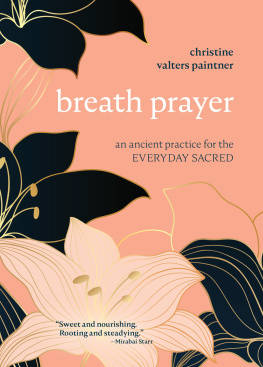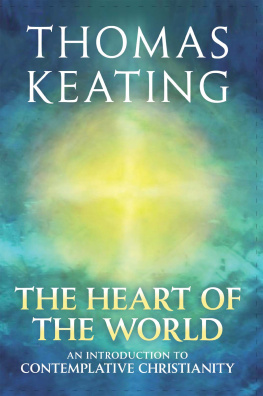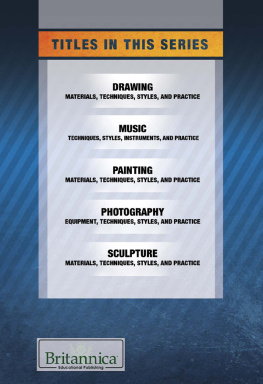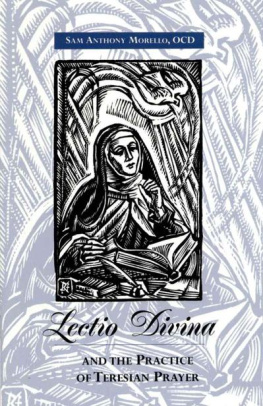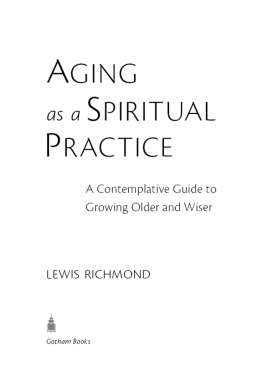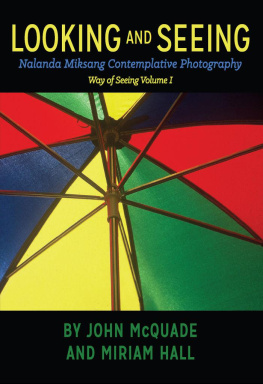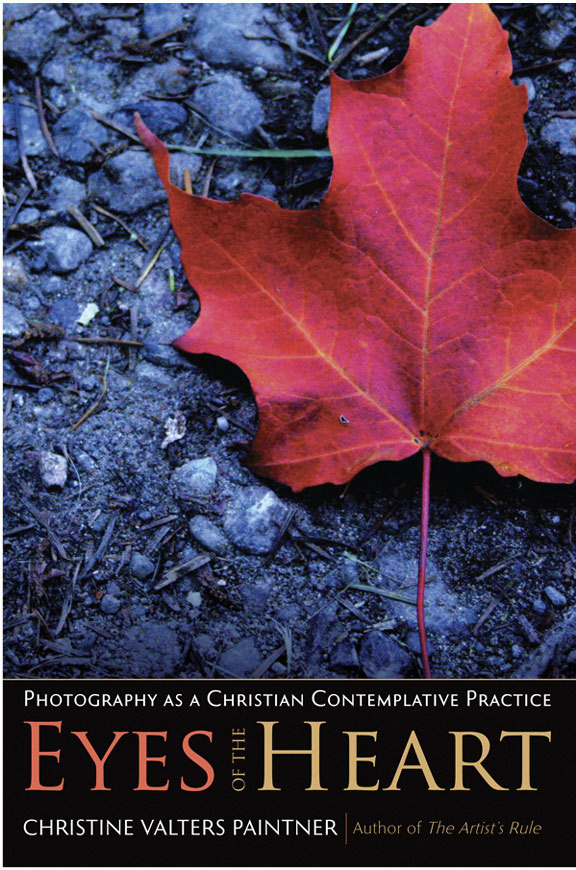
Opening Christine Paintners Eyes of the Heart is like entering a garden in full bloom. It opens up all your senses so you see, smell, taste, and touch the world in a whole new way. Paintner has a gift for reuniting the transcendent and the immanent. She calls God home. She sees the Divine in the pebble on the path, hears its sound in the buzzing mosquito. This modern-day monk knows the essential secrets to sacred living and joyful being and she shares them freely.
Jan Phillips
Author of No Ordinary Time
Christine Valters Paintner explores the eye as a window to the heart. Using scripture and observations from thinkers in all faiths she offers a spirituality of photography as writing with light. This monk, photographer-artist, and writer combines the art of image receiving with visio divina, taking us through a detailed program for the feeling, reflecting, and completion of our hearts vision.
Brother John J. OHara, S.A.
Graymoor Spiritual Life Center
of the Heart is more than a celebration of Gods presence in the world. It is itself an experience of receiving the Divine directly within. Paintners insights and exercises lead the reader to a personal, intimate encounter with divinity. In the process, she also illuminates the way to self-understanding and creative serenity.
Anthony F. Chiffolo
Author of Names of Mary
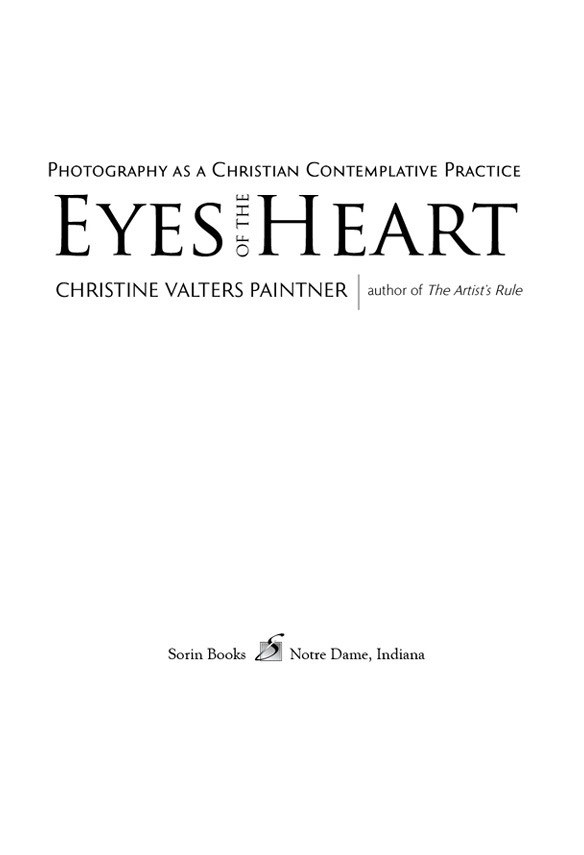
Permissions:
Carole Satyamurti, Stitching the New & Selected Poems (Bloodaxe Books, 2005). Used with permission.
Joanna Paterson, This Is Not Photography, Joannapaterson.co.uk (accessed on September 12, 2012).
____________________________________
2013 by Christine Valters Paintner
All rights reserved. No part of this book may be used or reproduced in any manner whatsoever, except in the case of reprints in the context of reviews, without written permission from Sorin Books, P.O. Box 428, Notre Dame, IN 46556-0428.
www.sorinbooks.com
Paperback: ISBN-10 1-933495-54-5, ISBN-13 978-1933495-54-5
E-book: ISBN-10 1-933495-55-3, ISBN-13 978-1933495-55-2
Cover image and interior photography Christine Valters Paintner.
Cover and text design by Brian C. Conley.
Printed and bound in the United States of America.
Library of Congress Cataloging-in-Publication Data
Paintner, Christine Valters.
Eyes of the heart : photography as a Christian contemplative practice / Christine Valters Paintner.
p. cm.
ISBN 978-1-933495-54-5 (pbk.) -- ISBN 1-933495-54-5 (pbk.)
Photography--Religious aspects--Christianity. Contemplation. Spiritual life--Christianity. I. Title.
BR115.A8P35 2013
248.34--dc23
2012039722
To my grandparents Faith and Fred Fitts, who helped to instill in me a very early appreciation for the gifts of photography.
Contents
Introduction
Seeing with Eyes of the Heart
Practices and Tools to Cultivate Vision
The Dance of Light and Shadow
What Is Hidden and What Is Revealed?
The Symbolic Significance of Color
What Is Mirrored Back?
Discovering the Holy within Us
Seeing the Holy Everywhere
Conclusion
Acknowledgments
Notes
Additional Resources
Introduction
May the eyes of your hearts be enlightened.
Ephesians 1:18
By virtue of the Creation and, still more, of the Incarnation, nothing here below is profane for those who know how to see.
Pierre Teilhard de Chardin
My journey with photography began when I was a very young girl. My maternal grandparents owned a chain of photography stores called Fitts Photo & Hobby Shop in Massachusetts, Vermont, and New Hampshire, and so I have owned a camera for as long as I can remember.
Photography has always been a way for me to see more deeply, but my awareness of how this was an experience of prayer and often an encounter with the sacred presence emerged over time. It wasnt until I embraced monastic spirituality in my late twenties that I began to experience photography consciously as a contemplative practice. I made a commitment as a Benedictine oblate at St. Placid Priory to deepen my own contemplative path. I began to see photography as a way to slow down and gaze deeply, noticing things I missed in my rushed life. For me, the camera provided an encounter with the eternal momentthat place in which I was able to suddenly become so present to what I was gazing upon that I lost track of time, allowing eternity to break in. It became a tool for deeper vision, supporting and enlivening contemplative seeing.
As my work began to take contemplative form, I began publishing my photos on my website AbbeyoftheArts.com in a prayerful and reflective context, as an adjunct to my writing. A global, online monastery, the website is dedicated to the integration of contemplative practice and creative expression. And in inviting others into contemplative space with me visually, I have been able to ask people to pause on a particular moment in time and see an aspect of the holy revealed in that image.
This book emerges from that holy seeing and from three of the identities I hold: monk in the world, photographer-artist, and writer. The way of the monk and the path of the artist together have been essential nourishment for my own spiritual deepening. My commitment to contemplative rhythms with slow, spacious attentiveness, and to creative expression by following what brings me alive, is an integration of practice that speaks most to my soul.
One of my previous books with Ave Maria Press, The Artists Rule: Nurturing Your Creative Soul with Monastic builds on this process of integrating the contemplative and creativeas do the classes I teach on contemplative photography. Eyes of the Heart takes that process into direct expression and combination, moving from ideas and principles to specific explorations, of spirituality and the lens of our eyes, the lens of the camera. Photography is often seen as a tool to be used for far-flung journeys and recording family events, but a photographic journey can also be taken right in your own neighborhoodas close as the block you live onas a way of discovering in new ways the everyday places you inhabit. With a special camera, or with a cell phone camera, a photograph can be made special by your discovery, by paying attention. One of the gifts of phones with built-in cameras, and places for sharing like Facebook and Twitter, is that we are encouraged to make this kind of creative expression a daily event and practice.
Photography as a spiritual practice combines the active art of image-receiving with the contemplative nature and open-heartedness of prayer. It cultivates what I call sacred seeing or seeing with the eyes of the heart (Ephesians 1:18). This kind of seeing is our ability to receive the world around us at a deeper level than surface realities.
We live in a product-oriented culture, where much of what we do is focused on an end goal or product to share. When we approach art in this way, we become distracted by trying to produce a beautiful image. When we focus on the process of art-making, rather than the we can immerse ourselves in the creative journey and discover the ways God is moving through our lives and how we are being invited to respond. We release our own plans and expectations and pay attention to what is actually unfolding within us.


